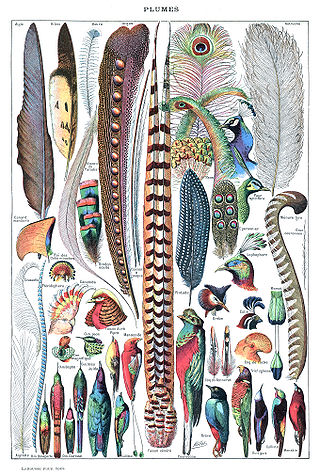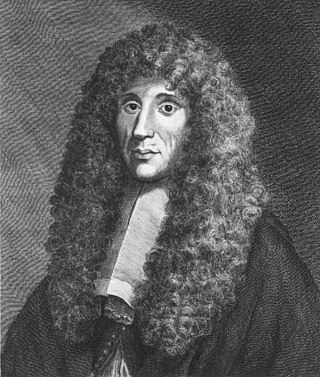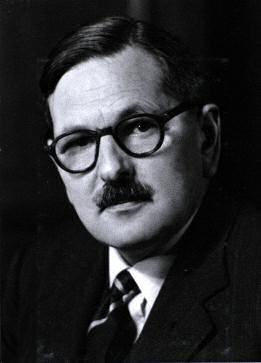Related Research Articles

Archaeopteryx, sometimes referred to by its German name, "Urvogel", is a genus of avian dinosaurs. The name derives from the ancient Greek ἀρχαῖος (archaīos), meaning "ancient", and πτέρυξ (ptéryx), meaning "feather" or "wing". Between the late 19th century and the early 21st century, Archaeopteryx was generally accepted by palaeontologists and popular reference books as the oldest known bird. Older potential avialans have since been identified, including Anchiornis, Xiaotingia, and Aurornis.

Edward Osborne WilsonFRS was an American biologist, naturalist, ecologist, and entomologist known for developing the field of sociobiology.
The conservation movement, also known as nature conservation, is a political, environmental, and social movement that seeks to manage and protect natural resources, including animal, fungus, and plant species as well as their habitat for the future. Conservationists are concerned with leaving the environment in a better state than the condition they found it in. Evidence-based conservation seeks to use high quality scientific evidence to make conservation efforts more effective.

Feathers are epidermal growths that form a distinctive outer covering, or plumage, on both avian (bird) and some non-avian dinosaurs and other archosaurs. They are the most complex integumentary structures found in vertebrates and a premier example of a complex evolutionary novelty. They are among the characteristics that distinguish the extant birds from other living groups.

Ira Flatow is a radio and television journalist and author who hosts Public Radio International's popular program Science Friday. On TV, he hosted the Emmy Award-winning PBS series Newton's Apple, a television science program for children and their families. Later he hosted another PBS series, Big Ideas. He has published several books, the most recent titled Present at the Future: From Evolution to Nanotechnology, Candid and Controversial Conversations on Science and Nature.

The manakins are a family, Pipridae, of small suboscine passerine birds. The group contains 55 species distributed through the American tropics. The name is from Middle Dutch mannekijn "little man".
Edmund Gustavus Bloomfield Meade-Waldo was an English ornithologist and conservationist. He is probably best known for his efforts to preserve the red kite in Wales.

Gregory Scott Paul is an American freelance researcher, author and illustrator who works in paleontology. He is best known for his work and research on theropod dinosaurs and his detailed illustrations, both live and skeletal. Professionally investigating and restoring dinosaurs for three decades, Paul received an on-screen credit as dinosaur specialist on Jurassic Park and Discovery Channel's When Dinosaurs Roamed America and Dinosaur Planet. He is the author and illustrator of Predatory Dinosaurs of the World (1988), The Complete Illustrated Guide to Dinosaur Skeletons (1996), Dinosaurs of the Air (2001), The Princeton Field Guide to Dinosaurs (2010), Gregory S. Paul's Dinosaur Coffee Table Book (2010), The Princeton Field Guide to Dinosaurs: 2nd Edition (2016), The Princeton Field Guide to Pterosaurs (2022), The Princeton Field Guide to Mesozoic Sea Reptiles (2022) and editor of The Scientific American Book of Dinosaurs (2000).

John Harold Ostrom was an American paleontologist who revolutionized the modern understanding of dinosaurs. Ostrom's work inspired what his pupil Robert T. Bakker has termed a "dinosaur renaissance".

Edward John Larson is an American historian and legal scholar. He is university professor of history and holds the Hugh & Hazel Darling Chair in Law at Pepperdine University. He was formerly Herman E. Talmadge Chair of Law and Richard B. Russell Professor of American History at the University of Georgia. He continues to serve as a senior fellow of the University of Georgia's Institute of Higher Education, and is currently a professor at Pepperdine School of Law, where he teaches several classes including Property for the 1Ls.

A biologist is a scientist who conducts research in biology. Biologists are interested in studying life on Earth, whether it is an individual cell, a multicellular organism, or a community of interacting populations. They usually specialize in a particular branch of biology and have a specific research focus.
Craig Stanford is Professor of Biological Sciences and Anthropology at the University of Southern California. He is also a Research Associate in the herpetology section of the Los Angeles County Natural History Museum. He is known for his field studies of the behavior, ecology and conservation biology of chimpanzees, mountain gorillas and other tropical animals, and has published more than 140 scientific papers and 17 books on animal behavior, human evolution and wildlife conservation. He is best known for his field study of the predator–prey ecology of chimpanzees and the animals they hunt in Gombe National Park, Tanzania, and for his long term study of the behavior and ecology of chimpanzees and mountain gorillas in Bwindi Impenetrable National Park, Uganda.
Feathers are epidermal growths which form an outer covering on birds and some dinosaurs.

Carl Safina is an American ecologist and author of books and other writings about the human relationship with the natural world. His books include Becoming Wild: How Animal Cultures Raise Families, Create Beauty, and Achieve Peace; Beyond Words: What Animals Think and Feel; Song for the Blue Ocean; Eye of the Albatross; The View From Lazy Point: A Natural Year in an Unnatural World; and others. He is the founding president of the Safina Center, and is inaugural holder of the Carl Safina Endowed Chair for Nature and Humanity at Stony Brook University. Safina hosted the PBS series Saving the Ocean with Carl Safina.

The evolution of birds began in the Jurassic Period, with the earliest birds derived from a clade of theropod dinosaurs named Paraves. Birds are categorized as a biological class, Aves. For more than a century, the small theropod dinosaur Archaeopteryx lithographica from the Late Jurassic period was considered to have been the earliest bird. Modern phylogenies place birds in the dinosaur clade Theropoda. According to the current consensus, Aves and a sister group, the order Crocodilia, together are the sole living members of an unranked reptile clade, the Archosauria. Four distinct lineages of bird survived the Cretaceous–Paleogene extinction event 66 million years ago, giving rise to ostriches and relatives (Palaeognathae), ducks and relatives (Anseriformes), ground-living fowl (Galliformes), and "modern birds" (Neoaves).

Hugh Bamford Cott was a British zoologist, an authority on both natural and military camouflage, and a scientific illustrator and photographer. Many of his field studies took place in Africa, where he was especially interested in the Nile crocodile, the evolution of pattern and colour in animals. During the Second World War, Cott worked as a camouflage expert for the British Army and helped to influence War Office policy on camouflage. His book Adaptive Coloration in Animals (1940), popular among serving soldiers, was the major textbook on camouflage in zoology of the twentieth century. After the war, he became a Fellow of Selwyn College, Cambridge. As a Fellow of the Zoological Society of London, he undertook expeditions to Africa and the Amazon to collect specimens, mainly reptiles and amphibians.

Nalini Nadkarni is an American ecologist who pioneered the study of Costa Rican rain forest canopies. Using mountain climbing equipment to make her ascent, Nadkarni first took an inventory of the canopy in 1981, followed by two more inventories in 1984.
The John Burroughs Medal, named for nature writer John Burroughs (1837–1921), is awarded each year in April by the John Burroughs Association to the author of a book that the association has judged to be distinguished in the field of natural history. Only twice has the award been given to a work of fiction.

Sneed Body Collard III is an American author.

Feathers: The Evolution of a Natural Miracle is a natural history book by American conservation biologist Thor Hanson. Published by Basic Books in 2011 and written for general audiences, the book discusses the significance of feathers, their evolution, and their history both in nature and in use by humans.
References
- ↑ Nature Staff (28 March 2019). "PBS Nature Program News". PBS. Retrieved October 1, 2019.
- 1 2 3 4 "Thor Hanson". Contemporary Authors Online. Gale. 3 June 2016 – via Literature Resource Center.
- ↑ Naish, Darren (7 May 2012). "Thor Hanson's Feathers: The Evolution of a Natural Miracle". Scientific American: Tetrapod Zoology. Scientific American. Archived from the original on 17 November 2017. Retrieved 10 January 2018.
- 1 2 "About Thor Hanson". Thor Hanson. Retrieved 11 March 2018.